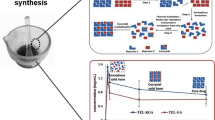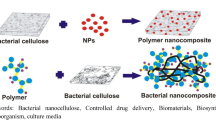Abstract
In this study an attempt was made to prepare mucoadhesive microcapsules of gliclazide using various mucoadhesive polymers designed for oral controlled release. Gliclazide microcapsules were prepared using sodium alginate and mucoadhesive polymer such as sodium carboxymethyl cellulose (sodium CMC), carbopol 934P or hydroxy propylmethyl cellulose (HPMC) by orifice-ionic gelation method. The microcapsules were evaluated for surface morphology and particle shape by scanning electron microscope. Microcapsules were also evaluated for their microencapsulation efficiency, in vitro wash-off mucoadhesion test, in vitro drug release and in vivo study. The microcapsules were discrete, spherical and free flowing. The microencapsulation efficiency was in the range of 65–80% and microcapsules exhibited good mucoadhesive property in the in vitro wash off test. The percentage of microcapsules adhering to tissue at pH 7.4 after 6 h varied from 12–32%, whereas the percentage of microcapsules adhering to tissue at pH 1.2 after 6 h varied from 35–68%. The drug release was also found to be slow and extended for more than 16 h. In vivo testing of the mucoadhesive microcapsules in diabetic albino rats demonstrated significant antidiabetic effect of gliclazide. The hypoglycemic effect obtained by mucoadhesive microcapsules was for more than 16 h whereas gliclazide produced an antidiabetic effect for only 10 h suggesting that mucoadhesive microcapsules are a valuable system for the long term delivery of gliclazide.







Similar content being viewed by others
References
T. Kristmundsottir, and K. Ingvarsdotir. Ibuprofen microcapsules: The effect of production variables on microcapsule properties. Drug Dev Ind Pharm. 20:769–778 (1990).
N. Bolourtchian, Karimi, and R. Aboofazeli. Preparation and characterization of ibuprofen microspheres. J Microencapsul. 22:529–538 (2005).
J. A. Bakan. Microencapsulation. The Theory and practice of Industrial pharmacy, In L. Lachman, and H. A. Liberman (eds.), 2nd ed., Varghese, Mumbai, India, 1991, pp. 412–428.
J. K. Vasir, K. Tambwekar, and S. Garg. Bioadhesive microspheres as a controlled drug delivery system. Int J Pharm. 255:13–32 (2003).
K. P. R. Chowdary, and Y. S. Rao. Mucoadhesive microspheres for oral controlled drug delivery. Biol Pharm Bull. 27:717–1724 (2004).
S. A. S. Tabassi, and N. Razavi. Preparation and characterization of albumin microspheres encapsulated with propranolol HCl. DARU. 11:137–141 (2003).
S. Haznedar, and B. Dortunc. Preparation and in vitro evaluation of Eudragit microspheres containing acetazolamide. Int J Pharm. 269:131–140 (2004).
K. P. R. Chowdary, and Y. S. Rao. Preparation and evaluation of mucoadhesive microcapsules of indomethacin. Saudi Pharm J. 11:97–103 (2003).
M. Bogataj, A. Mrhar, and L. Korosec. Influence of physiochemical and biological parameters on drug release from microspheres adhered on vesical and intestinal mucosa. Int J Pharm. 177:211–220 (1999).
D. E. Chickering, and E. Mathiowitz. Bioadhesive microspheres I.A novel electrobalance-based method to study adhesive interactions between individual microspheres and intestinal mucosa. J Control Release. 34:251–261 (1995).
K. D Tripathi. Essentials of Medical Pharmacology, 4th ed., Jaypee Brothers, Medical Publishers, New Delhi, India, 1999, pp. 276–278.
G. Scherathaner et al. Guide study: double - blind comparison of once - daily gliclazide MR and glimepiride in type 2 diabetic patients. Eur J Clin Invest. 34:535–542 (2004).
S. K. Wangnoo. Treatment of type 2 diabetes with gliclazide modified release 60 mg in the primary care setting of India. Int J Diab Dev Countries. 25:50–54 (2005).
J. F. Yong, G. L. Wei, R. Lu, C. X. Liu, B. Z. Zheng, and P. Feng. Bioavailability of gliclazide sustained release tablet in healthy volunteers. Asian J Pharmcodyn Pharmucokin. 2:153–160 (2006).
E. A. Arno, P. Anand, K. Bhaskar, S. Ramchandran, M. Saravanan, and R. Vinod. Eudragit NE 30D based metformin/gliclazide extended release tablets: formulation, characterisation and in vitro release studies. Chem Pharm Bull. 5011:1495–1498 (2002).
K. P. R. Chowdary, and Y. S. Rao. Design and In vitro and in vivo evaluation of Mucoadhesive microcapsules of glipizide for oral controlled release A technical note. AAPS Pharm Sci Tech. 4:1–6 (2003).
M. G. Sankalia, R. C. Mashru, R. C. Sankaliax, V. B. Sutariya. Papain Entrapment in alginate beads for stability improvement and site-specific delivery: Physicochemical characterization and factorial optimization using neural network modeling. AAPS PharmSciTech 6(2): article 31 (2005). http://www.aapspharmscitech.org.
C. M. Lehr, J. A. Bowstra, J. J. Tukker, and H. E. Junginger. Intestinal transit of bioadhesive microspheres in an in situ loop in the rat. J Control Release. 13:51–62 (1990).
H. M. Mukhtar, S. H. Ansari, M. Ali, Z. A. Bhat, and T. Naved. Effect of aqueous extract of Cyamopsis tetragonoloba Linn. beans on blood glucose level in normal and alloxan-induced diabetic rats. Indian J Exp Biol. 42:1212–1215 (2004).
S. Satyanarayana, and E. K. Kilari. Influence of nicorandil on the pharmacodynamics and pharmacokinetics of gliclazide in rats and rabbits. Mol Cell Biochem. 291:101–105 (2006).
S. H. Yoo, Y. B. Song, P. S. Chang, and H. G. Lee. Microencapsulation of α tocopherol using sodium alginate and its controlled release properties. Int J Biol Macro. 38:25–30 (2006).
Author information
Authors and Affiliations
Corresponding author
Rights and permissions
About this article
Cite this article
Prajapati, S., Tripathi, P., Ubaidulla, U. et al. Design and Development of Gliclazide Mucoadhesive Microcapsules: In Vitro and In Vivo Evaluation. AAPS PharmSciTech 9, 224–230 (2008). https://doi.org/10.1208/s12249-008-9041-0
Received:
Accepted:
Published:
Issue Date:
DOI: https://doi.org/10.1208/s12249-008-9041-0




